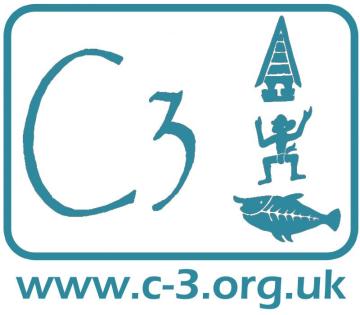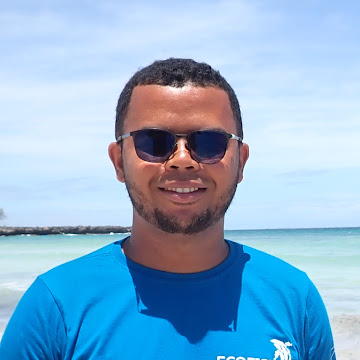
Empowering fishermen through resource management within a structured framework

Not only to improve the governance of Nosy Hara and strengthen the resilience of the local community to the challenges of climate change but also in the pursuit of sustainable fishing practices within this marine protected area, our project focuses on empowering local fishermen to manage and protect their natural resources effectively, thereby establishing a structured governance system for resource management. By intertwining regulatory compliance with community engagement, we aim to establish this structured framework that addresses the immediate challenges posed by migrant fishers while ensuring that local fishermen can obtain the necessary professional permissions to operate legally. As migrant fishermen do not respect the fishing calendar, laws, and do not hold authorization allowing them to work legally in the area.
This project aims to empower local communities to take charge of their natural resources. By fostering collaboration among fishermen, we create a sustainable framework that ensures both economic viability
Context
Challenges addressed
1. Establish Local Associations: Forming fishermen associations in each of the 21 villages beneficiaries to create a unified voice and management system for local fishers.
2. Empower Local Fishers: Ensuring that local fishermen have access to professional fishing cards by adhering to the guidelines set forth by these associations.
3. Prevent Illegal Fishing: Implementing a system that restricts access to the fishing grounds to only those who are members of the associations, thereby reducing the impact of migrant fishers on local resources.
4. Sustainable Practices: Encouraging responsible fishing techniques and practices that protect marine biodiversity within the Nosy Hara.
Location
Process
Summary of the process
These activities interact in a synergistic manner, creating a comprehensive framework that promotes sustainable fishing practices and community engagement among local fishers. By conducting meetings serves to bring fishers together, fostering a sense of community and collective ownership over local fishing resources. This initial step encourages active participation and lays the groundwork for establishing associations. Establishing statutes ensures clarity in membership roles and responsibilities. This regulatory framework is crucial for managing access to fishing grounds, which prevents unauthorized fishing and supports the long-term sustainability of fish populations
Building Blocks
Conception of one action plan with the Regional Directorate of Fisheries and Blue Economy (DRPEB) of Diana
In close collaboration with the Regional Directorate of Fishing and the Blue Economy of Diana, with whom we developed an action plan for the implementation of all the activity, mutually approved and signed.
Lesson learned
It is always necessary to establish synergy with the partners concerned in order to be able to implement the planned activities effectively and efficiently.
Formation of Associations
- Conduct community meetings to gather fishers and discuss the benefits of forming local associations.
- Facilitate the establishment of association statutes that outline membership requirements, roles, and responsibilities.
Enabling factors
This mechanism serves dual purposes: it not only regulates access to the fishing grounds by preventing unauthorized fishing activities from transient fishers but also fosters a sense of community ownership among the local population.
Lesson learned
As they each have their own statutes and internal regulations but also their common fund allowing their association to develop
Registration and Credentialing
- Develop a procedure for registering members in the association, ensuring they meet all local requirements.
- Guide association members through the process of obtaining their fishermen cards, emphasizing its importance as a legal requirement for their livelihood.
-Taking fishermen identities, information and photo
Operational Guidelines
- Create operational guidelines that detail how the association will manage fishing activities, including rules about fishery zones, seasonal closures, and sustainable practices.
- Establish a monitoring system to ensure compliance with these rules, reinforcing accountability among members.
Enabling factors
The fishermen cards, which are essential for lawful fishing, operate as a crucial incentive; those who do not secure membership within their respective associations will be ineligible to receive these cards, exposing them to potential legal repercussions.
Lesson learned
Through these associations, local fishermen gain official membership status, which is a prerequisite for obtaining their professional fishermen cards.
Education and Advocacy
- Provide training workshops focusing on sustainable fishing methods, resource management, and the legal ramifications of illegal fishing practices.
- Work with local authorities to educate them about the role of the associations and the necessity of enforcing regulations that protect their members and the ecosystem.
Lesson learned
Every descent into each village, our team was always accompanied by staff from the regional directorate of fishing and the blue economy (DRPEB). Through fieldworks, they took the opportunity to raise awareness about fishing regulations, reminders of laws and procedures as well as respect for fishing calendars for various fishery resources.
Impacts
- Increased Compliance: Fishers obtain their professional fishermen cards, ensuring legal compliance while facilitating their ability to operate within Nosy Hara.
- Reduced Illegal Fishing: With the establishment of associations, migrant fishers face barriers to entry, contributing to a more sustainable and regulated fishing environment. Application and respect of Dina which is a local collective agreement
-Strengthened Community Resilience: By empowering local fishermen through association governance, communities build resilience against external pressures and foster a cooperative approach to resource management.
- Sustainable Resource Management: The implementation of best practices promotes the preservation of fish populations and habitat, ensuring the long-term health of the marine ecosystem.
Beneficiaries
More than 1200 Local fishers across 21 villages of Nosy Hara Marine Protected Area. 35% of them are women and 55% are composed by young people
Sustainable Development Goals
Story
In the coastal village of Ambararata, one little village of Nosy Hara marine Protected, the sounds of the waves crashing against the shore harmonized with the daily lives of the villagers who relied on fishing for their livelihood. For years, the local fishermen faced the daunting challenges of overfishing by migrant fishers, and the absence of legal recognition.
With the support of a dedicated project, initiated by C3 Madagascar through the BIOPAMA programme, aimed at revitalizing and legalizing their fishing practices, the villagers came together to form their Fishers’ Association. As their first major achievement, the CLP or Local Committee of the Parc received a sturdy boat with motor to improve patrols across Nosy Hara but the fisher's association can also use it. As months passed, the association established a common account. Fishermen no longer had to rely solely on immediate sales; they began to save together. Each member contributed a portion of their earnings into the account, and the treasurer managed the funds diligently. By the end of the fourth month, their collective savings bloomed to over 400,000 MGA. This financial empowering moment was a turning point; they had not simply earned money but had built a foundation for future projects and stability.
Furthermore, with the support of the project which allowed them to obtain their professional cards they no longer would be subject to the uncertainty of illegal fishing practices or the fear of being fined. Instead, they operated with pride, knowing they were contributing to sustainable fishing.
The positive impact of the association extended beyond the members’ families. With more money and resources available, they shared their experiences and successes, inspiring other villages to consider forming their own associations. And so, in the village of Ambararata, a new chapter unfolded—one of hope, success, and a unified spirit amongst the fishers who dared to work together for a better tomorrow.









